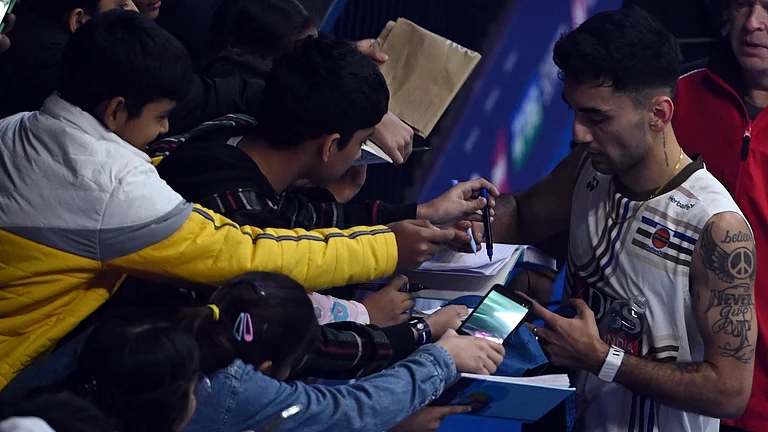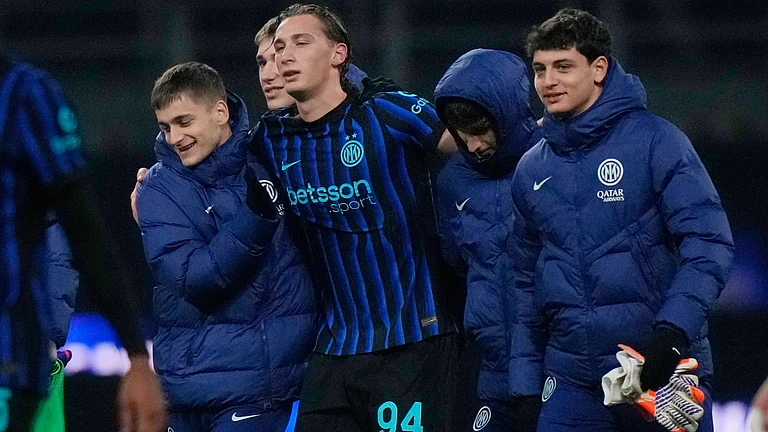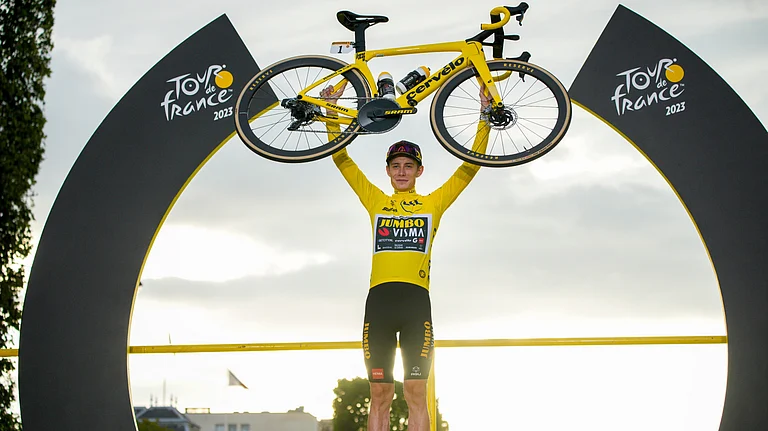The starting gun was sounded as far back as the weekend of January 11-12, when Chinese authorities released the full sequence of the COVID-19 genome. The ‘vaccine race’ has now grown to field some 118 potential candidates and seen unprecedentedly short projected completion windows—most experts endorse a 12-18 month ‘best-case scenario’. Traditionally, a vaccine’s clinic-to-market cycle can take upwards of a decade. Though the global health emergency brought on by COVID-19 has looked like catalysing that marathon into a sprint, the race has regulatory, scientific and market hurdles to overcome: the transitionfrom proof-of-principle to commercial development will be plagued by bottlenecks. And attrition too will play its part: industry benchmarks peg the failure rate at greater than 90 per cent. No wonder the European Medicines Agency dismisses claims of a ‘cure by Christmas’.
All this unfolds against a backdrop of geopolitical tensions and ‘vaccine nationalism’—faultlines that grew wider still at the WHO’s 73rd (but first ‘virtual’) World Health Assembly on May 18-19. Just days later, Donald Trump was to announce that America would be “terminating its relationship” with WHO. But at the Assembly, US-based biotech firm Moderna was making a pitch for Olympic gold. One of around eight candidates in clinical trials, Moderna cited early, non-peer reviewed data from Phase I human trials that began in March to announce that its mRNA-1273 vaccine had “elicited an immune response of the magnitude caused by natural infection”. That is, after the trial vaccine was administered, a small group of volunteers had shown levels of antibodies comparable to or better than those in recovered COVID-19 patients. Levels claimed to be capable of stopping the Sars-CoV-2 virus from replicating, suggesting—but not proving—a degree of immunity. Only days before, one of Moderna’s directors, Moncef Slaoui, had been named chief scientist for ‘Operation Warp Speed’, a White House initiative to accelerate vaccine development. Unsurprisingly, the FDA is “fast-tracking” regulatory reviews for its vaccine. All said, Moderna looks on pace to deliver on its “early 2021” timeline.
On a macro scale, this is a case study of the pandemic-induced new normal in vaccine development: novel (read unproven) technologies and approaches, fast-track tags, political interests—and record levels of international collaboration...and competition. The accelerated development pathways were mapped out in a March 30 article published in The New England Journal of Medicine by the Coalition for Epidemic Preparedness Innovations (CEPI), the influential Norway-based multilateral non-profit that’s bankrolling multiple COVID-19 vaccine projects (including Moderna’s). Its outlined “pandemic paradigm” is instructive: inter alia, a call for parallel testing of animal and Phase I (of three) human clinical tests and scaling up manufacturing capacity even before safety and efficacy data are available!

With the exigencies being what they are, how do you even advocate scepticism? Well, actual efficacy is a good enough reason, and only one. “While having over a 100 vaccine candidates sounds good, it’s important to remember we will be phenomenally lucky if just a handful of the approaches...make it through to licensure,” CEPI vice-chair Dr Gagandeep Kang has been quoted as saying. This caution against an assumption of ‘imminence’ or inevitability is a refrain taken up by scientists and public health officials—they liken the odds of success to playing Russian Roulette. WHO health emergencies programme executive director Dr Michael Ryan labels the prospect of finding a vaccine a “massive moonshot”. President Trump has been bullish about a vaccine to ‘keep America great’ in an election year, but the (since sidelined) head of his Coronavirus Task Force, Dr Anthony Fauci, says there is “no guarantee” a potential vaccine is going to be effective. What’s worse, he cautions, in trading safety and efficacy for speed, a vaccine might actually “backfire” and strengthen the virus.
What about India? There’s frenetic action in the worlds of science and pharma here—the promised speed with which the silver bullet may arrive depending on who’s speaking, whether it’s a repurposed version of an old vaccine or a novel technology, and whether it’s emanating from pure research or is prodded along by industry linkages (including global collaborations). We also have official word. Union health minister Dr Harsh Vardhan says four of 14 vaccine candidates might begin clinical trials within five months. Dr Vardhan, appointed the other day to the WHO executive board rotational chairman’s post, is of the (relatively) conservative opinion that a vaccine is at least a year away. It’s a call-to-arms to the Indian scientific community from the government, so financial support/regulatory clearance should be a cinch. The story is running along several tracks, both independent of and tied to events elsewhere. So a quick scan of the world story must precede the India one. But the key scientific determinant here, as in China or the West, will be: what kind of vaccine is it? What does it do, how does it propose to stop this infinitely plastic enemy?
Dr Shahid Jameel, noted virologist and CEO of Wellcome Trust-DBT India Alliance (a leading research funding charity), speaking to Outlook, offers a preliminary description: “None of the vaccines claim to produce a sterilising response (protection against infection). In fact, most vaccines protect against the disease in that they don’t allow the infection to escalate. This is a fine point that must be understood. Infections do happen, but the vaccine stops the virus from spreading from the primary site of replication (throat and nasopharyngeal space) to secondary sites (lungs). It’s the secondary infections that cause most of the mortalities and morbidities.” Dr Jameel is not one inclined to stand with all the naysaying on COVID-19 vaccine development.
But outright credulity may be inadvisable too. “There’s no vaccine for either the SARS or the MERS coronavirus in humans, a clue to how difficult developing a vaccine for Sars-CoV-2 is,” said Dr David Salisbury, ex-director of immunisation at the UK health department, during a webinar at London think-tank Chatham House. “Like any horse race, you pick your horse without the benefit of knowing whether it would win.” The reference to the SARS virus is apt since the genome sequencing of SARS-CoV-2 is said to exhibit over 79 per cent of genetic material identical to the virus behind the 2002 epidemic (and 50 per cent of the MERS virus). Both viruses are comprised of RNA strips surrounded by a fatty sheath through which its spike (S-) proteins latch onto the same receptors on the host—the ACE-2 enzyme attached to the human lung’s surface cells, for instance—and go on to extend and infect the cells.
What Kind of Vaccine?
Past failures have not deterred big (and small) pharma from attempting to unlock the virus’s secrets. Moderna and some 20 other candidates (per the WHO) are taking advantage of a revolution in sequencing and genomics to create messenger RNA (mRNA) vaccines that instruct human cells to create a protein specific to SARS-CoV-2 in order to trigger a defensive immune response. There’s also a plethora of alternative approaches. Nipping at Moderna’s heels is China-based CanSino Biologics whose Ad5-nCoV vaccine has emerged as a dark horse after becoming the first candidate to both move into Phase II clinical trials and release peer-reviewed data. It’s a recombinant adenovirus-based vaccine—that is, its base is one of the common cold viruses, manipulated and weakened in the lab. A ‘proven platform’, in industry parlance. A study in The Lancet found it to be both “tolerable and immunogenic” (stimulating an immune response) 28 days after vaccination.
Another front-runner was US firm Inovio, whose CEPI-funded DNA vaccine INO-4800 has had to weather accusations of ‘charlatanism’. Their approach supposedly involves having a hand-held smart device use an electrical pulse to open small pores in cells through which optimised DNA plasmids can enter—overcoming an issue with DNA and mRNA vaccines—and generate antigens that trigger an immune response. In addition to triggering neutralising antibodies in animal trials, Inovio claims INO-4800 generated “high levels” of T-cells—deemed a critical indicator of the immune system’s chances of defeating the virus—specific to the spike protein. One of the fastest horses out the gate was the Jenner Institute at Oxford University whose adenovirus-based ChAdOx1 nCoV-19 vaccine—now being co-developed by drugmaker AstraZeneca—appears to have rebounded after taking a hit over a reported inability to both prevent, and stop the spread of, infection in animal trials. This vaccine also targets the virus’s S-protein.
The India Vaccine?
Factors beyond science are at play because of the stakes involved—national pride, big money. Dr Jameel cites the fact that China may suffer from a “capacity and trust deficit” that puts off foreign investment. And trade publications attribute a lot of the negative buzz to Wall Street short-sellers with vested interests. Adar Poonawalla, CEO of Pune-based Serum Institute—among the Oxford vaccine’s suitors—has said as much. A ‘gentleman’s agreement’ between Poonawalla and Jenner Institute head Dr Adrian Hill has been reported. On its basis, Serum is repurposing its factory to produce sufficient quantities of the vaccine for low- and middle-income countries starting September, when Poonawalla has said the vaccine will be ready. A claim only matched in ambition by the scale of investment, given Dr Hill’s recent estimations of the likelihood of a vaccine at “50 per cent”. Serum has also reportedly hedged its bets through tie-ups with US biotech firms Codagenix and Novavax, as also Austria’s Themis Bioscience GmbH, to potentially manufacture three other vaccine candidates.

On the other end of the scale is a start-up, the Pune-based Seagull BioSolutions. The first to be funded by the Union ministry of science and technology in April, its expected timeline for entering Phase-1 trials is 18-20 months. Incubated under the Technology Development Board’s ‘Seed Support System’ scheme, Seagull will use its proprietary Active Virosome Technology (AVT) to create novel active virosomes (highly customised, replication-deficient artificial delivery mechanisms) through an attenuated measles virus vector platform. Founder-director Dr Vishwas Joshi says his tech has the advantage of not needing the virus to be “cultured, isolated and replicated” as in other approaches. “All we need is the sequence. With that, we can create AV agents after evaluating the best suited antigen cocktail to stimulate the body’s immune response without getting compromised,” says Dr Joshi, noting the AV agents will target both Sars-CoV-2’s S-protein and basic structural proteins. Scale is a challenge for “cash-strapped” Seagull, so it has entered into an “in principle” agreement with Bangalore-based Biocon. Kiran Mazumdar-Shaw, Biocon’s executive chairperson, tweeted about the project in April and is reportedly keen on its ease-of-commercialisation potential. As is Dr Joshi, though he says “decision-making processes in big companies take a long time”.
Some Rs 56 crore has been earmarked for start-ups working on COVID-19 solutions, says Department of Science and Technology (DST) secretary Ashutosh Sharma. There’s also Rs 100 crore for vaccine development under PM CARES. Helming this push are the Department of Biotechnology (DBT), the coordinating agency here, and the Biotechnology Industry Research Assistance Council (BIRAC). In April, DBT-BIRAC selected three projects—from Zydus Cadila, Bharat Biotech and Serum—for financing and regulatory help. The selections, DBT says, cover both efforts to repurpose existing vaccines and facilitation of novel ones, and fast-tracking will be enabled via a research consortium funded by the National Biopharma Mission, an industry-academia collaboration. The Indian Institute of Science (IISc) too is attempting to design and test derivatives of the spike glycoprotein for potential vaccine candidates through Mynvax, an IISc-incubated start-up. “If the world is to get an affordable vaccine, Indian companies will absolutely play a leading role. No country can match our manufacturing capacity and production rates. But much of what we do relies on conventional technologies. Through collaboration or self-innovation, our facilities will need to be refitted with new technologies,” Dr Jameel says. Speaking on National Technology Day (May 11), WHO chief scientist Soumya Swaminathan too said, “The world will not have enough vaccines for everyone if India is not part of the process.”
It was nearly mid-May when India officially tossed its hat into the ring, with ICMR tying up with Hyderabad-based Bharat Biotech (BBIL) to develop “a fully indigenous vaccine”. Dr Rajni Kant, director of the ICMR-Regional Medical Research Centre (RMRC) at Gorakhpur, estimates six months to a year for clinical trials to be completed. “Of the 17 isolates of the virus obtained at the National Institute of Virology in Pune,” he says, “one strain that showed potential was purified, characterised and transferred to BBIL to develop and manufacture a truly made-in-India vaccine.” ICMR has promised “continuous support” to fast-track the work. BBIL has also received DBT funding to try re-engineer its inactivated rabies vector platform for COVID-19. It’s also working on CoroFlu, a one-drop nasal vaccine that uses a flu vaccine “backbone” being developed in a global collaboration.
Via Hyderabad
Since April, Hyderabad has become a hub of vaccine development with Indian Immunologicals (IIL) scientists collaborating with Australia’s Griffith University to develop a single-dose, ‘live attenuated vaccine’ using ‘codon de-optimisation technology’ while the University of Hyderabad has designed a candidate using ‘T-cell epitopes’ that’s being analysed for viability. All of which prompted Telangana CM K. Chandrasekhar Rao to suggest the possibility of a vaccine produced from his state capital between July-August. In Ahmedabad, Zydus Cadila is working on two options, including a DBT-funded DNA approach, while an arm of the state’s DST has inked MoUs with three Gujarat-based private firms: Hester Biosciences, Vekaria Healthcare and start-up Neuberg Supratech Reference Laboratory. Caveat? As Dr Jameel says, “It depends on what one means by ‘getting a vaccine’. When one says a vaccine will be out by September, they are referring to proof-of-concepts that show which approaches work or do not work. Beyond that, we are still, optimistically, about a year from licensure.”
Mutatis Mutandis
This is a parallel danger: virus mutations rendering a vaccine inefficacious. Dr Salisbury says this mechanism isn’t properly understood, suggesting there could be “genetic drift”, like with the seasonal flu, which necessitates adapting the vaccine to keep pace. “If the bit of the virus critical to vaccine development mutates, we’ll have problems,” he has warned. But Dr Rajni Kant says changes so far have been within an acceptable range—“not so significant that vaccine efficacy will be affected”. An IISc scientist concurs: “From a vaccine point of view, mutations are not yet a significant issue. In the crucial S-protein, there’s a widely-found mutation at only one position, not in others.”
For all the competition and ‘vaccine one-upmanship’, what will prove decisive is cumulative—and collective—science; the sharing of knowledge, resources and technologies. For all the bickering over who gets the first dibs, there has also been an unprecedented pooling of ideas—pharma majors Sanofi and GlaxoSmithKline, for instance, are co-developing an adjuvant vaccine (a substance combined with a vaccine antigen to stimulate a more robust, targeted immune response). Moderna CEO Stephane Bancel even hopes “regulators will approve several vaccines from multiple companies, because no manufacturer can make enough for the planet”. Nowhere is it written, Dr Jameel says, that the “first vaccine to cross the finish line would be the best or be produced in enough capacity to save the entire world by itself”. The WHO Assembly adopted a unanimous resolution overriding corporate patent rights in the interest of public access to vaccines. A good start, but as Oxfam International noted, even that left “too many barriers standing in the way of a vaccine for all”.
Siddharth Premkumar in Thiruvananthapuram























